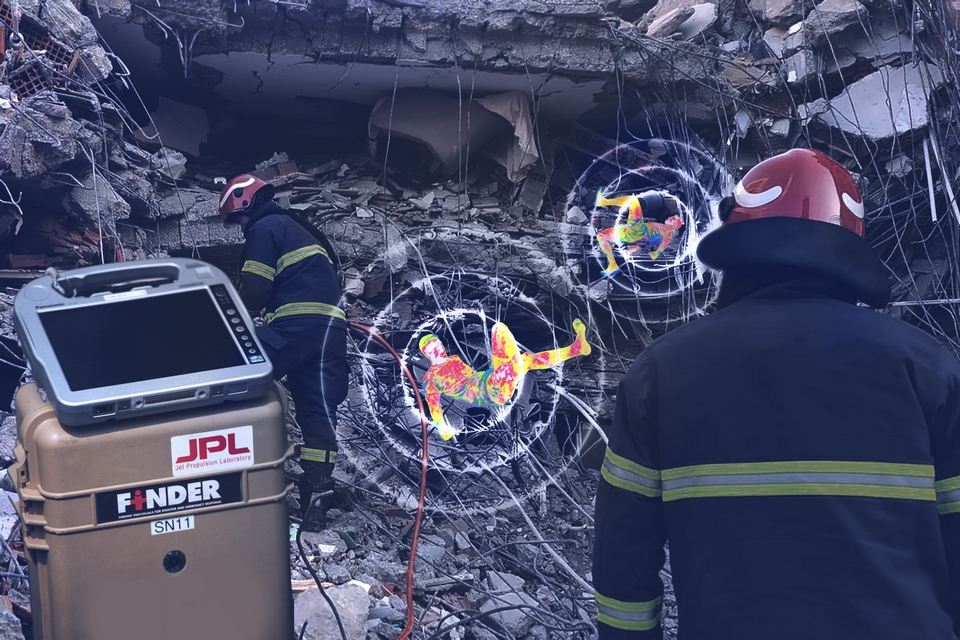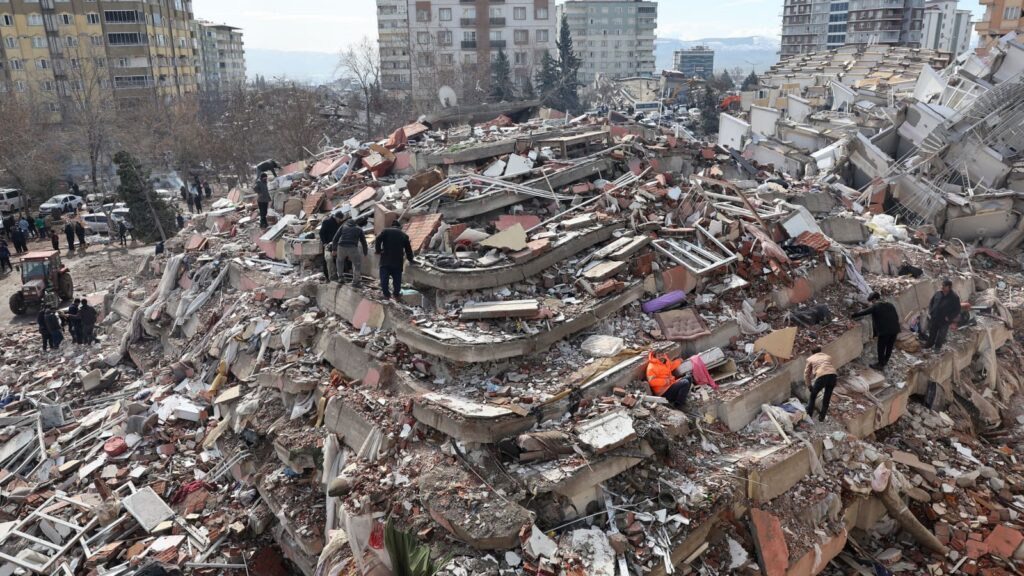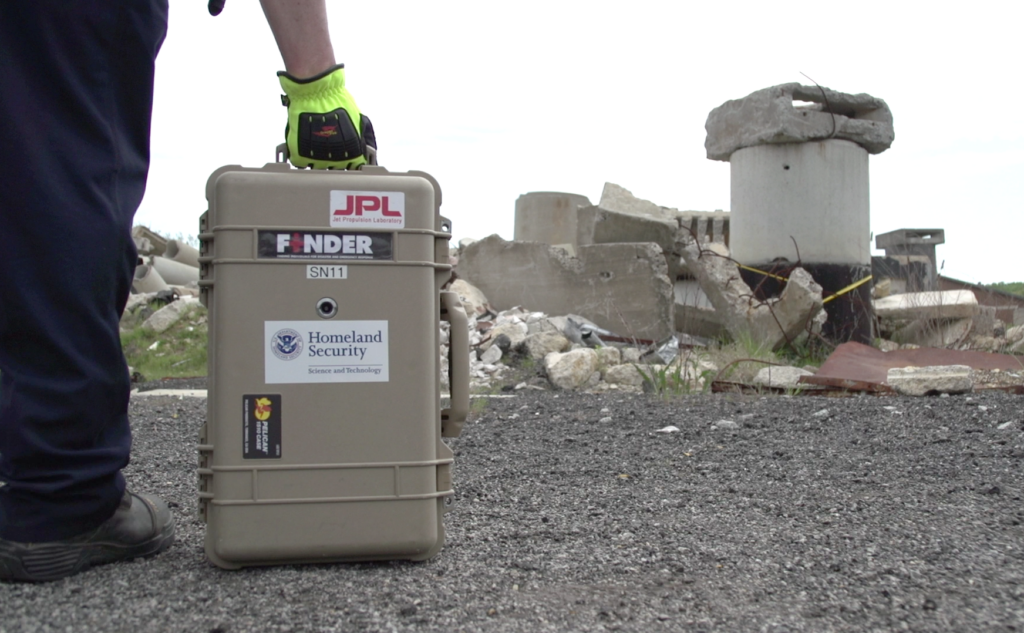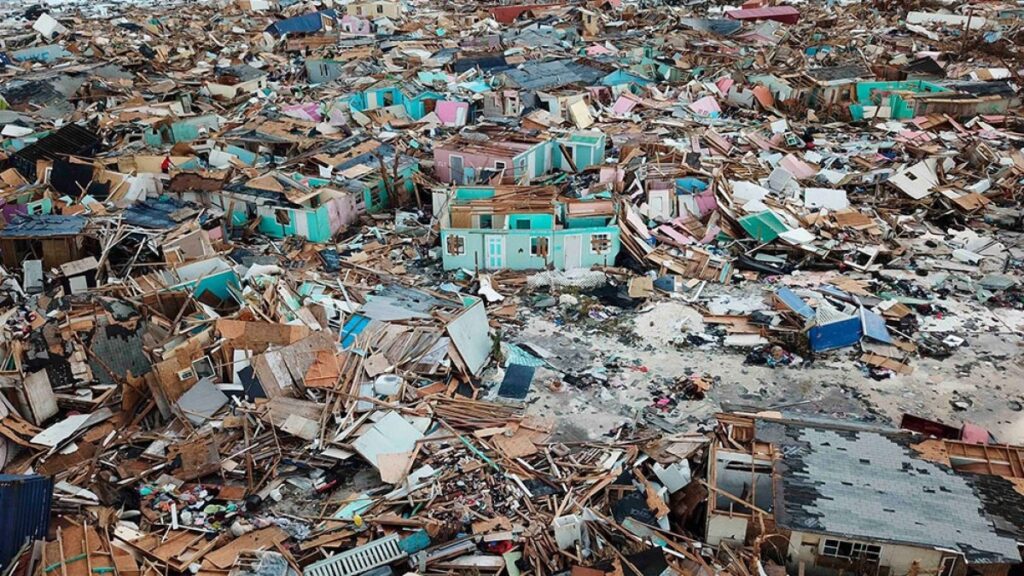When a large building collapses, it is crucial to find people trapped under the rubble as quickly as possible. Scientists affiliated with NASA developed a device called FINDER (Finding Individuals for Disaster and Emergency Response) ten years ago, which can accomplish this task rapidly. FINDER is a microwave radar capable of sensing the smallest movements through the debris.

How People End Up Under Rubble
Unfortunately, during the cruel air raids by Russia, Ukrainian Air Defense Forces sometimes fail to completely neutralize the missiles and drones. Occasionally, the weapons hit their targets, which are often high-rise residential buildings. As a result, the entire country witnesses people who perish under the debris of their own homes.
However, the damage caused by these barbaric actions can be significantly reduced. The point is that during the destruction of buildings, a large number of people do not die immediately but much later. The injured individuals are trapped under the rubble and slowly succumb to the lack of water and medication.
Therefore, rescuers immediately start working on the debris, and their main task is to quickly locate those who are still alive. However, this task is not as simple as it seems. It is impossible to see a person under large debris, and hearing them is extremely difficult because even screams do not always penetrate through the thickness of concrete and bricks.
Moreover, the injured person may be unconscious or too weak to shout loudly. In such cases, rescuers rely on specially trained dogs, but even they cannot always provide timely assistance because reaching the injured individuals can take hours. To do this, it is necessary to know their exact location, which dogs often cannot indicate.

NASA Comes to the Rescue
The problem of finding people trapped under rubble is not solely caused by hostilities. More often, it arises during earthquakes, similar to the recent one that struck Turkey. It was precisely for these cases that NASA experts began developing technology back in 2010 that could efficiently locate living individuals under debris, surpassing the capabilities of any dog.
The request for the development of such technology to prevent future fatalities came when the Federal Emergency Management Agency (FEMA) was confronted with the aftermath of a devastating earthquake in Haiti. Hundreds of people in Port-au-Prince perished under the rubble because they failed to receive assistance timely. The request was directed to the Science and Technology Directorate of the U.S. Department of Homeland Security.
Eventually, this request reached the Jet Propulsion Laboratory (JPL NASA) in Southern California. Its staff already had expertise gained from joint military projects aimed at detecting human heartbeats through obstacles. In fact, this technology was originally developed to help American troops identify their adversaries hiding inside buildings.
Now, they decided to employ it for peaceful purposes. Thus, a device known as FINDER (Finding Individuals for Disaster Emergency Response) was created. Its prototype was developed by the experts from the same laboratory, funded by the Department of Homeland Security.
What is FINDER?
Essentially, FINDER is a microwave radar. It emits electromagnetic pulses of a specific frequency capable of penetrating through solid materials, gradually being absorbed and reflected by them.
The portion of energy reflected by obstacles then returns to the detector and gets analyzed. Based on the characteristics of the reflected waves, it is possible to determine if there are significant voids under the rubble. Moreover, continuous pulse emissions enable tracking even the slightest movements, allowing the detection of people’s heartbeats beneath the debris.
FINDER can differentiate between the movements of humans and machinery, and even humans and animals, which is crucial in the context of rapid search and rescue operations. Furthermore, it is a relatively compact device. The developers managed to fit it into a standard Pelican plastic case commonly used for transporting various rescue equipment.

The FINDER prototype, unveiled in 2013, had some limitations. It couldn’t determine the exact number of people under the rubble, and certain materials (such as steel) absorbed its waves too strongly, preventing it from seeing what was happening beyond them. However, overall, the prototype’s performance was approved, and further work on it was commissioned.
Has a revolution occurred in search and rescue operations?
The further development of FINDER was undertaken by SpecOps Group Inc. from Sarasota, Florida, along with another company that obtained a license to create its commercial version. The founders of SpecOps were Adrian Garuley and Tom Coulter, and the entire management of the company consists of former military personnel and NASA employees.
With the assistance of JPL NASA experts, SpecOps was able to create several new prototypes and significantly improve the radar. They even added new features to it. In the commercial version, FINDER is capable of locating individuals under rubble. However, some engineers moved on to other projects, and the other company decided against manufacturing this promising device.

Nevertheless, SpecOps continues to produce this radar. The latest version, X3 FINDER, weighs only 6 kg, and it takes 30 seconds to set it up for operation. This device was first used in the Bahamas during the aftermath of Hurricane Dorian. However, for a long time, its application occurred without much publicity.
The thing is, FINDER was mainly sold to government agencies within the United States. Therefore, it was mostly known among American rescuers. However, in recent years, the situation has been changing, as rescue services in the United Kingdom, France, Norway, Saudi Arabia, and the Philippines have purchased the radar.
So, it is quite possible that a revolution in search and rescue operations is imminent. However, there are several objective obstacles. Firstly, the market for such devices is extremely small. They are purchased almost exclusively by government rescue services, and typically through rigid government procurement systems.
Secondly, FINDER is not the only development of its kind. Radars for locating people, operating on different wavelengths, have been developed for decades. The results of these efforts can be considered successful, albeit with some reservations, as none of them provides a 100% guarantee. Nevertheless, the invention by NASA experts has the potential to save many lives.

